GEORGE ANDERSON TIMELINE
1952 (August 13): George Anderson, Jr. was born in Long Island, New York.
1959: Anderson’s first visits from apparition he termed the “Lilac Lady” occurred.
1960s (Late): Anderson underwent psychological counseling and falsely diagnosed with paranoid
schizophrenia.
1973: Anderson joined a local group dedicated to psychic abilities.
1978: Anderson realized his calling to assist grieving relatives and friends of deceased.
1980 (October): Anderson was featured as a guest on The Joel Martin Show.
1981: Anderson and Joel Martin began cohosting Psychic Channels on the Viacom network.
1987: Joel Martin and Patricia Romanowski co-authored We Don’t Die: George Anderson’s Conversations with the Other Side.
1990s: Anderson began holding exclusively private reading sessions, founding George Anderson Grief
Support Programs.
1995: Anderson was invited to Holland by surviving members of Anne Frank’s family to conduct a reading.
1997 (September 1): George Anderson Grief Support Programs launched its website.
2001: ABC aired a special, Contact: Talking to the Dead.
FOUNDER/GROUP HISTORY
On August 13, 1952, George Anderson, Jr. was born in Long Island, New York to parents George and Eleanor Anderson. The youngest of four children, Anderson, Jr.’s family included two half-sisters and a brother two years his senior. The Andersons were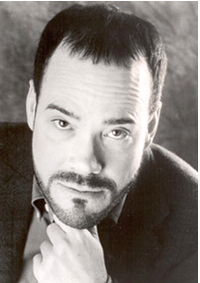 a relatively average, working-class family. His father was employed by the Pennsylvania Railroad as a baggage clerk until an accident severely disabled him and forced him to forfeit his job. He would later find employment with KLM Airlines and, despite remaining moderately handicapped throughout his life, was able to support the family. Growing up in a devoutly Catholic environment, Anderson and his three siblings attended school at Our Lady of Perpetual Help in Lindenhurst, New York. A shy child with a reported indifference toward things that interested the typical child of his age, Anderson struggled emotionally, socially, and academically throughout his school years. At the age of six, he contracted the chicken pox, an event that would ultimately further separate him from his peers as well as set the course for the rest of his life. While contracting the chicken pox virus is common among young children and typically cured routinely, Anderson did not respond to treatment. As a result, he contracted encephalomyelitis, a virus which causes inflammation of the brain and spinal cord. As the virus coursed through his body, Anderson lost all sensation in his limbs and his family began to fear death. With treatment, Anderson was able to regain some muscular mobility shortly thereafter, but he was left unable to walk for three months. However, as Anderson now explains it, other regions of his brain separate from those utilized in leg mobility began to compensate for the brain tissue damaged by the illness, and one morning he woke up having regained use of his legs. Anderson has retrospectively used this same explanation to account for the supernatural experiences he began to undergo soon after his near-death encounter.
a relatively average, working-class family. His father was employed by the Pennsylvania Railroad as a baggage clerk until an accident severely disabled him and forced him to forfeit his job. He would later find employment with KLM Airlines and, despite remaining moderately handicapped throughout his life, was able to support the family. Growing up in a devoutly Catholic environment, Anderson and his three siblings attended school at Our Lady of Perpetual Help in Lindenhurst, New York. A shy child with a reported indifference toward things that interested the typical child of his age, Anderson struggled emotionally, socially, and academically throughout his school years. At the age of six, he contracted the chicken pox, an event that would ultimately further separate him from his peers as well as set the course for the rest of his life. While contracting the chicken pox virus is common among young children and typically cured routinely, Anderson did not respond to treatment. As a result, he contracted encephalomyelitis, a virus which causes inflammation of the brain and spinal cord. As the virus coursed through his body, Anderson lost all sensation in his limbs and his family began to fear death. With treatment, Anderson was able to regain some muscular mobility shortly thereafter, but he was left unable to walk for three months. However, as Anderson now explains it, other regions of his brain separate from those utilized in leg mobility began to compensate for the brain tissue damaged by the illness, and one morning he woke up having regained use of his legs. Anderson has retrospectively used this same explanation to account for the supernatural experiences he began to undergo soon after his near-death encounter.
He recalls being awakened from his sleep one night by the figure of a woman dressed in pale purple robes standing at the foot of his bed. While the woman did not speak and disappeared after a few minutes, Anderson claims that she was able to access his soul and communicate soothing messages telepathically. The woman, who Anderson termed the “Lilac Lady,” began to appear with some regularity in the following months, and it was only then that he told his parents of these communications. Anderson’s parents initially entertained his stories as childhood fantasies, but they soon became disturbed as he insisted her tangibility and spoke of her progressively frequently. However, rather than stopping, the visions progressed, and Anderson began communicating with what he considered spirits of the deceased. He recalls telling a neighbor about a visit he had from the boy’s grandmother who had passed away. The boy’s parents became enraged and alarmed by Anderson’s account which, alongside his own parents’ disbelief, discouraged him from sharing his experiences and he made a conscious decision to keep them a secret.
Eventually, after years of visitations, Anderson reportedly convinced himself that these events were ordinary and that everyone underwent similar experiences of contact. As a young teenager, Anderson received vision in which the young Louis XVII escaped to England in the midst of the French Revolution, which was contrary to a statement in his teacher’s lecture that all of the children of Louis XVI and Marie Antoinette were murdered. Anderson refuted his instructor, asserting that his vision had revealed the true fate of the royal children. This incident not only further isolated an already troubled Anderson from his peers, but the school guidance counselor recommended that he receive psychiatric attention. Anderson underwent a series of diagnostic tests at the Catholic Charities Mental Health Center before receiving a diagnosis of paranoid schizophrenia. When his visions still did not cease despite treatment, it was suggested to Anderson’s parents that he be admitted to the Central Islip State Hospital in New York, an inpatient psychiatric facility. However, upon meeting with Anderson, a psychiatrist at the hospital insisted that not only should a sixteen-year-old not be admitted to such a facility, but that he suffered from nothing more than stress responses to ordinary pressures of adolescence. It was recommended that Anderson be briefly removed from school in order to recover. After leaving school, Anderson took a job as a switchboard operator, which he held for several years; however, his communications and visions persisted. Scarred from having been met with an onslaught of disbelief, Anderson struggled to conceptualize his ability throughout his teenage and early adult years (Anderson and Barone 1999; “Meet Legendary Medium George Anderson” n.d.) . However, when Anderson reached his twenties, he began to regard his experiences spiritually, and, in 1973, he joined a local group dedicated to psychic abilities where he reportedly refined his mediumship. In 1978 his life came to a turning point when he realized what he came to consider his life’s calling. At the urging of a close friend, he began using his ability to help the family members and friends of the deceased to communicate with the spirits of their loved ones (Hornberger 2004:17; Buckland 2005:6).
With a reported accuracy rate of nearly eighty-five percent, Anderson attracted a considerable amount of attention and was soon conducting “readings” on not only scattered members of his community, but also a multitude of grieving individuals who believed 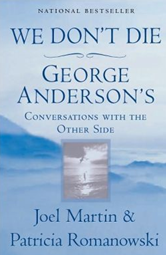 in his gift and sought out his services. In 1980, Anderson’s career began to take form when he was introduced to reporter and paranormal investigator, Joel Martin. Anderson appeared on Martin’s radio talk show, The Joel Martin Show, in October of 1980 and conducted a reading on the then-skeptical Martin which he claimed was so accurate that he instantly altered his stance on the paranormal. Thereafter, Martin frequently featured Anderson on The Joel Martin Show , where he would provide readings over the air to call-in audience members. Anderson quickly became the talk show’s most popular guest and together, and the duo attracted enough attention that, in 1981, they began co-hosting a television program called Psychic Channels on the cable network Viacom (now CBS). The weekly program, which remained in production throughout the majority of the 1980s, was generally well-received. As it gained popularity, the waiting time for studio audience tickets climbed to about two years. Psychic Channels featured readings by George Anderson of audience members, many of which were transcribed and published in Joel Martin and Patricia Romanowski’s 1987 book We Don’t Die : George Anderson’s Conversations with the Other Side .
in his gift and sought out his services. In 1980, Anderson’s career began to take form when he was introduced to reporter and paranormal investigator, Joel Martin. Anderson appeared on Martin’s radio talk show, The Joel Martin Show, in October of 1980 and conducted a reading on the then-skeptical Martin which he claimed was so accurate that he instantly altered his stance on the paranormal. Thereafter, Martin frequently featured Anderson on The Joel Martin Show , where he would provide readings over the air to call-in audience members. Anderson quickly became the talk show’s most popular guest and together, and the duo attracted enough attention that, in 1981, they began co-hosting a television program called Psychic Channels on the cable network Viacom (now CBS). The weekly program, which remained in production throughout the majority of the 1980s, was generally well-received. As it gained popularity, the waiting time for studio audience tickets climbed to about two years. Psychic Channels featured readings by George Anderson of audience members, many of which were transcribed and published in Joel Martin and Patricia Romanowski’s 1987 book We Don’t Die : George Anderson’s Conversations with the Other Side .
Anderson’s visibility continued to grow throughout the 1990s, largely due to the success of We Don’t Die. Martin and Romanowski authored two more follow-up books containing readings by Anderson. We Are Not Forgotten: George Anderson’s Messages of Love and Hope from the Other Side was published in 1991, and Our Children Forever: George Anderson’s Message from Children from the Other Side was published in 1996 (Hornberger 2004:17; “Joel Martin” n.d.). At this time, Anderson founded an organization, George Anderson Grief Support Programs, which made his services more widely-accessible and in 1995 he was reportedly invited to Holland by the living members of Anne Frank’s family to conduct a discernment with those who had died in the Holocaust; however, details of the encounter are scarce.
Anderson paired with the executive director of George Anderson Grief Support Programs, Andrew Barone, to coauthor three more books, including New York Times bestseller George Anderson’s Lessons from Light , in 1999. The success of the book sprung Anderson to unprecedented levels of international celebrity, and he made a number of media appearances throughout the following years, including a television special titled Contact: Talking to the Dead in 2001. The program, which aired on ABC, featured readings with celebrities such as Vanna White and Bret Hart (Vaughan and Porche 2005, 45). Anderson has gained a considerable degree of popularity throughout Europe and in South Africa and Asia as well as the United States. (Buckland 2005:7).
DOCTRINES/BELIEFS
At the most fundamental level, George Anderson proclaims three basic spiritual beliefs: an afterlife exists, human beings possess a soul that is separate from the body, and those still living are able to communicate with the deceased through mediums. Although many believers consider Anderson’s mediumship and all similar abilities to be God-given gifts, Anderson, acknowledging it as an extraordinary and rare ability, asserts that it resulted from the “rewiring” of certain brain regions following a childhood illness (Reed 1999; “Meet Legendary Medium George Anderson” n.d.). Furthermore, Anderson draws a clear distinction between his mediumship and other supernatural abilities, such as conjuring and clairvoyance, stating that his body is merely a tool that allows willing souls to communicate with living individuals and vice versa. While Anderson was raised in the Roman Catholic tradition and acknowledges a Christian influence, an allegorical interpretation of the Bible, and a belief in a God, he has not set forth any well-defined beliefs regarding the role and nature of the divine (Anderson n.d.). At the same time, Anderson has provided a clear-cut description of what he considers to be the afterlife; one that often diverges from the Christian tradition’s concept of Heaven.
According to Anderson, all of the information he sets forth regarding the afterlife has come directly from the souls with whom he 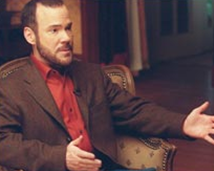 communicates. He claims that after the death of the body, the soul passes through a tunnel into a different state of consciousness. While often experiencing a sense of being uplifted or enlightened, which many confuse with a physical lifting of the soul into a Heaven that exists above the physical realm, the spiritual realm runs parallel to the physical universe, on a different “wavelength.” The spiritual realm consists of separate levels of consciousness, the first two of which being dark levels, which many perceive as Hell or purgatory. While the majority of souls seem to pass through these levels quickly if not immediately, certain souls, typically those who performed evil acts in life or committed suicide, may linger in these two levels.
communicates. He claims that after the death of the body, the soul passes through a tunnel into a different state of consciousness. While often experiencing a sense of being uplifted or enlightened, which many confuse with a physical lifting of the soul into a Heaven that exists above the physical realm, the spiritual realm runs parallel to the physical universe, on a different “wavelength.” The spiritual realm consists of separate levels of consciousness, the first two of which being dark levels, which many perceive as Hell or purgatory. While the majority of souls seem to pass through these levels quickly if not immediately, certain souls, typically those who performed evil acts in life or committed suicide, may linger in these two levels.
According to Anderson, the soul is subject to “judgment;” however, unlike the Christian conception, the judgment process is not passed down from God onto the soul, but is a completely individual process. Once a soul has reached the afterlife, it must acknowledge actions committed while in the physical realm, its positive and negative attributes, and seek to progress spiritually. Anderson states that, much like on Earth, spirits in the afterlife have jobs and tasks that they must perform, including helping other souls to cross over. These tasks allow one’s own soul to progress and reach higher levels of consciousness. Once entering a higher level, a soul may travel at will downward through the lower levels, and will often choose to do so in order to remain with a loved one, such as a family member or close friend from the physical realm, who has not yet achieved entrance to the higher levels.
While the soul bears no physical resemblance to the physical body, and thus does not appear in the afterlife as it did on earth, it can be recognized by other spirits by its distinct personality. Therefore, those close to someone in life can remain in contact in the spiritual realm. According to Anderson, the souls of friends and family members are often waiting to greet the newly deceased as he or she enters the afterlife. Rekindled souls will often remain together in the next realm, although the barriers of role commonly disappear or change. For example, the souls of a mother and son will no longer consider themselves as such, but rather simply as two spirits on the same “vibration” (quoted by Martin and Romanowski 1987:226). However, Anderson claims that spirits possess the capability to appear in a physical, recognizable form during a reading in order to communicate more effectively with him and those with whom they are trying to communicate.
Anderson has also acknowledged the ability of souls to re-enter the physical universe and live multiple lives. According to Anderson, while many wait until they have reached higher levels of consciousness and have progressed spiritually to enter into a subsequent life, others, particularly those who died suddenly and unexpectedly, may choose to re-enter the physical realm immediately. Furthermore, just as souls in the spiritual realm will traditionally remain with spirits with whom they were close in life, they will often embark on subsequent lives together, “coming back” as family members or friends. Finally, Anderson proclaims that although all experiences in the spiritual realm are subjective, an overwhelming majority of the spirits with whom he has communicated claim to be happy, at peace, and self-aware.
RITUALS/PRACTICES
George Anderson Grief Support Programs offers three different types of discernment sessions: private, group, and telephone sessions. Both private and group sessions are held in a conference room of a hotel in Commack, Long Island. On the day of the readings, clients are asked to wait in the lobby of the hotel until Anderson is ready to begin. A staff member meets the clients within several minutes and answers any questions before leading them to the conference room to begin the session. According to Anderson, although the time per private session varies depending on the amount of communication from the spirits, a typical reading lasts about fifty minutes to an hour. For a charge of $1,200, one or two persons may attend the private session, with no supplementary charge for children under sixteen years of age. An additional five hundred dollars admits a third person, and a family of up to six members may request a private reading for $2,000 (“Private Sessions” n.d.) Group sessions allow individuals or couples to receive a “mini-reading,” commonly lasting about fifteen to twenty minutes, within a group setting. Groups are both organized by topic, such as parents who have lost children, or convenience; therefore, group size varies based on opportunity, interest, and time allotment. Anderson charges $400 for each mini-session within a group reading, and each is limited to one or two people. Furthermore, if two people are in attendance, it is not required that they are legal relatives; however, they must seek to communicate with the same soul (“Small Group Sessions” n.d.). Telephone sessions are available for those limited in their ability to travel and may be placed internationally. These sessions are comparable to private sessions in length and cost $1,200 (“Telephone Sessions” n.d.).
Despite the organizational differences among sessions, Anderson has described and displayed a relatively uniform process in which readings occur. Prior to the session, Anderson recommends that all persons seeking to make contact first accept the loss of the person with whom they seek to communicate. According to Anderson, while spirits are able to make contact immediately after entering the spiritual realm, communication is most effective and beneficial after the bereaved has reached a degree of understanding his or her loss. Furthermore, acknowledging that, due to emotional strain, it is often difficult to fully comprehend precisely what the spirits are trying to communicate as the session is occurring, clients are encouraged to make audio recordings of the readings; however, videotaping the sessions is strictly forbidden.
Clients’ personal statements have provided some insight into the progression of a typical discernment session. Anderson will 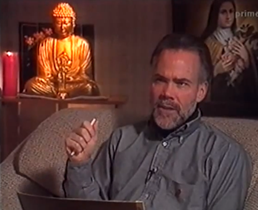 typically begin the reading by reciting a short prayer and picking up a pen and a pad of paper. He will then begin to move the pen over the paper as if scribbling rapidly on the page, but he does not actually touch the paper or leave any markings. He maintains that this allows him to better channel the spirits’ energy. He then instructs clients to only answer either “yes” or “no” to the statements made by spirits throughout the session, explaining that each soul is aware that someone in the physical realm is trying to communicate with him or her and understands what the client needs to hear to benefit from the contact. Therefore, as Anderson explains, “the only words you need to say in a session are that you understand the information that your loves ones are telling you” (“Frequently Asked Questions” n.d.; Filius 2001).
typically begin the reading by reciting a short prayer and picking up a pen and a pad of paper. He will then begin to move the pen over the paper as if scribbling rapidly on the page, but he does not actually touch the paper or leave any markings. He maintains that this allows him to better channel the spirits’ energy. He then instructs clients to only answer either “yes” or “no” to the statements made by spirits throughout the session, explaining that each soul is aware that someone in the physical realm is trying to communicate with him or her and understands what the client needs to hear to benefit from the contact. Therefore, as Anderson explains, “the only words you need to say in a session are that you understand the information that your loves ones are telling you” (“Frequently Asked Questions” n.d.; Filius 2001).
Anderson has likened the beginning of the session, in which the soul first makes contact with him, to a Polaroid photograph. Within seconds, an image of the soul trying to communicate becomes increasingly clear, to the point where he or she can be described to the client. Anderson will often begin illustrating the spirit in vague terms, such as gender or relationship to the client, until the client is able to identify the soul trying to make contact. Anderson’s descriptions will typically become increasingly specific as the session continues, often offering a name or cause of death. Sessions will often conclude with a message from the soul, the nature of which usually being one of comfort or reassurance that he or she has entered into an afterlife and is at peace.
ORGANIZATION/LEADERSHIP
George Anderson began holding private reading sessions around 1978 when, after years of self-doubt and skepticism, he 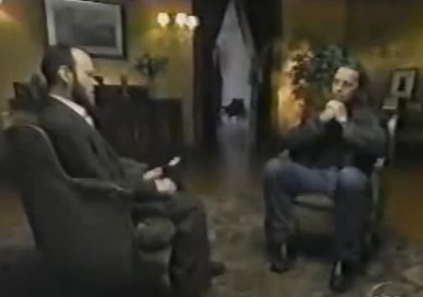 reportedly began to interpret his ability in a spiritual sense. He quickly gained a considerable degree of attention and hosted a television show titled Psychic Channels alongside Joel Martin throughout the majority of the 1980s. The program featured discernments with audience members and callers and featured guests in the paranormal field, such as fellow mediums, psychics, and skeptics. The show gained immediate attention and, at its peak around the mid-1980s, boasted a two-year waiting period for studio audience tickets (“Joel Martin” n.d.). After compiling years of recordings of reading sessions between Anderson and both audience members and private clients, Martin and Patricia Romanowski coauthored a book titled We Don’t Die: George Anderson’s Conversations with the Other Side. The immediate success of the book spurred a nationwide tour, with Anderson appearing on television talk shows such as Larry King Live and Live With Regis & Kathy Lee. Upon returning from the tour, Anderson stepped back from the spotlight and began holding exclusively private reading sessions through his organization George Anderson Grief Support Programs (Buckland 2005:7). Martin and Romanowski’s two subsequent books, published in the 1990s, continued to draw attention to the medium.
reportedly began to interpret his ability in a spiritual sense. He quickly gained a considerable degree of attention and hosted a television show titled Psychic Channels alongside Joel Martin throughout the majority of the 1980s. The program featured discernments with audience members and callers and featured guests in the paranormal field, such as fellow mediums, psychics, and skeptics. The show gained immediate attention and, at its peak around the mid-1980s, boasted a two-year waiting period for studio audience tickets (“Joel Martin” n.d.). After compiling years of recordings of reading sessions between Anderson and both audience members and private clients, Martin and Patricia Romanowski coauthored a book titled We Don’t Die: George Anderson’s Conversations with the Other Side. The immediate success of the book spurred a nationwide tour, with Anderson appearing on television talk shows such as Larry King Live and Live With Regis & Kathy Lee. Upon returning from the tour, Anderson stepped back from the spotlight and began holding exclusively private reading sessions through his organization George Anderson Grief Support Programs (Buckland 2005:7). Martin and Romanowski’s two subsequent books, published in the 1990s, continued to draw attention to the medium.
On September 1, 1997 George Anderson Grief Support Programs launched a website, georgeanderson.com, which made 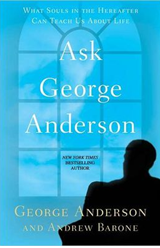 Anderson’s services more widely-available. Within the first month of activity, the website’s “Ask George Anderson” service received about one thousand queries from individuals across the globe. Within a year, the website had reportedly received over fifty thousand emails, questions, and comments from forty countries. Within five years, almost half a million people had accessed the site. Today George Anderson Grief Support Programs operates out of two offices, both located in New York, under Anderson himself and executive director Andrew Barone. It also employs a staff to respond to the reported “800 phone calls, 1,200 emails, and 200 letters” received weekly; manage the organization’s website; and offer over-the-phone grief support services to callers (“Frequently Asked Questions”). Despite his appearance on the 2001 ABC Special, Contact: Talking to the Dead , according to Anderson’s website, he does not currently make any media appearances or perform public readings. Rather he offers exclusively the private, telephone, and group sessions outlined on the site (“Contact the Programs Office” n.d.).
Anderson’s services more widely-available. Within the first month of activity, the website’s “Ask George Anderson” service received about one thousand queries from individuals across the globe. Within a year, the website had reportedly received over fifty thousand emails, questions, and comments from forty countries. Within five years, almost half a million people had accessed the site. Today George Anderson Grief Support Programs operates out of two offices, both located in New York, under Anderson himself and executive director Andrew Barone. It also employs a staff to respond to the reported “800 phone calls, 1,200 emails, and 200 letters” received weekly; manage the organization’s website; and offer over-the-phone grief support services to callers (“Frequently Asked Questions”). Despite his appearance on the 2001 ABC Special, Contact: Talking to the Dead , according to Anderson’s website, he does not currently make any media appearances or perform public readings. Rather he offers exclusively the private, telephone, and group sessions outlined on the site (“Contact the Programs Office” n.d.).
ISSUES/CHALLENGES
Even before the onset of his career, George Anderson was met repeatedly with challenges to the legitimacy of his ability. Having been doubted by his parents, peers, and numerous figures of authority throughout his childhood and teenage years, Anderson was nearly placed in an inpatient psychological institution and treated for schizophrenia. However, his visions did not stop, and eventually they fueled a career beset by controversy and skepticism. The most common criticism of Anderson’s ability has been that his readings are often too vague, or incorrect, to be considered legitimate. Former clients as well as general skeptics have accused Anderson of obtaining information about clients before readings and, as paranormal investigator and skeptic Gary Posner states, likened his reading process to “play[ing] a version of the child’s games ‘Hot and Cold’ and ‘20 Questions’” (Posner 2006). Furthermore, although Anderson claims to have undergone and passed a series of scientific tests, many have questioned the legitimacy of the scientists and the measures used to obtain such results. In 2003, the Committee for Skeptical Inquiry, an organization dedicated to paranormal investigation, posted an article titled “How Not to Test Mediums: Critiquing the Afterlife Experiments,” criticizing the method through which University of Arizona professor Gary Schwartz and colleagues tested and confirmed the paranormal abilities of several mediums, including George Anderson (Hyman 2003).
In response to skepticism regarding the legitimacy of his ability, Anderson argues that many skeptics of mediumship are all subject to the same misunderstanding: that communicating with the spiritual realm is an infallible process. On the contrary, as Anderson retorts, there is much room for miscommunication due to human error on his part and that of the client and because many of the messages he receives from spirits are in symbols, images, and visions, rather than words. Therefore, it is often difficult to relay to the client exactly what the spirit is communicating. As it pertains, Anderson has metaphorically likened his ability to that of an athlete, stating that “every time a ballplayer steps up to the plate, he doesn’t hit a home run. But that doesn’t mean he can’t play ball” (quoted by Reed 1999). Furthermore, refuting claims that he obtains information about clients prior to readings, he maintains that George Anderson Grief Support Programs takes measures to assure the complete anonymity of clients. Anderson reports that this is done by replacing names with client numbers after appointments have been booked; therefore, he does not have access to clients’ names at any point prior to, during, or after the session.
Finally, concerns have been raised regarding what some consider the inappropriately high cost of reading sessions. In response, the organization claims that due to the large number of people seeking readings from Anderson and contacting the organization with questions and concerns, it must maintain a full-time staff. Furthermore, Anderson is very limited in how many readings he can conduct per week. Although the organization states that it is currently working toward lowering the cost of private readings, the present cost per session is necessary to fund the organization (“Frequently Asked Questions,” n.d). Regardless of the numerous criticisms, skepticisms, and challenges faced by George Anderson Grief Support Programs, the organization continues to thrive as Anderson claims to have conducted over 30,000 readings throughout the course of his career (“Meet Legendary Medium George Anderson” n.d.).
REFERENCES
Anderson, George. n.d. “Previous Installments.” Ask George Anderson. George Anderson Grief Support
Programs. Accessed from http://www.georgeanderson.com/askgeorge2.htm on 17 February 2014.
Anderson, George and Andrew Barone. 2001. Walking in the Garden of Souls. New York: G. P. Putnam’s Sons.
Anderson, George and Andrew Barone. 1999. Lessons from the Light: Extraordinary Messages of Hope from the Other Side. New York: Penguin Group.
Buckland, Raymond. 2005. The Spirit Book: Encyclopedia of Clairvoyance, Channeling, and Spirit
Communication. Canton: Visible Ink Press.
“Contact the Programs Office,” n.d. George Anderson Grief Support Programs Accessed from
http://georgeanderson.com/contactus.htm on 17 February 2014.
Filius, Charles A. 2001. “My Reading by George Anderson.” Extralargemedium.net. Accessed from
http://www.extralargemedium.net/georgeanderson.htm on 17 February 2014.
“Frequently Asked Questions,” n.d. George Anderson Grief Support Programs. Accessed from
http://georgeanderson.com/faq.htm on 17 February 2014 .
Hornberger, Francine. 2004. The World’s Greatest Psychics. New York: Kensington Publishing.
Hyman, Ray. 2003. “How Not to Test Mediums: Critiquing the Afterlife Experiments.” The Committee for
Skeptical Inquiry. Accessed from http://www.csicop.org/si/show/how_not_to_test_mediums_critiquing_the_afterlife_experiments on 17 February 2014.
“Joel Martin: Best Selling Author and Paranormal Journalist.” n.d. MargaretWendt.com. Accessed from
http://margaretwendt.com/joel_martin.php on 17 February 2014.
Martin, Joel and Patricia Romanowski. 1988. We Don’t Die: George Anderson’s Conversations with the Other Side. New York: Penguin.
“Meet Legendary Medium George Anderson,” n.d. George Anderson Grief Support Programs. Accessed
from http://www.georgeanderson.com/georgeandersonbio.htm on 17 February 2014 .
Porche, Jean and Deborah Vaughan. 2005. Psychics & Mediums in Canada. Ontario: Dundurn Press.
Posner, Gary P. 2006. “’Close Encounter of the 2nd-Hand Kind’ with ‘Psychic Medium’ George
Anderson.” Tampa Bay Skeptics . Accessed from
http://www.tampabayskeptics.org/v19n1rpt.html on 17 February 2014.
“Private Sessions,” n.d. George Anderson Grief Support Programs. Accessed from
http://georgeanderson.com/privatesessions.htm on 17 February 2014.
Reed, J.D. 1999. “Across The Great Divide.” People. Accessed from
http://www.people.com/people/archive/article/0,,20129566,00.html on 17 February2014.
“Small Group Sessions.” n.d. George Anderson Grief Support Programs. Accessed from
http://georgeanderson.com/groupsessions.htm on 17 February 2014.
“Telephone Sessions.” n.d. George Anderson Grief Support Programs. Accessed from
http://georgeanderson.com/telephonesessions.htm on 17 February 2014.
Williams, Kevin. n.d. “George Anderson,” Near Death Experiences and the Afterlife. Accessed from
http://www.near-death.com/index.html#.UwKlXrRlp_c on 17 February 2014.
Post Date:
24 February 2014
